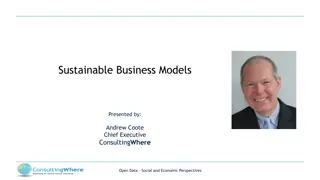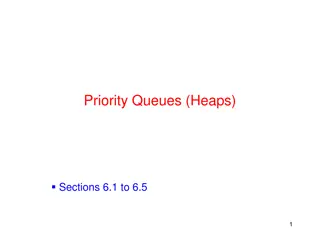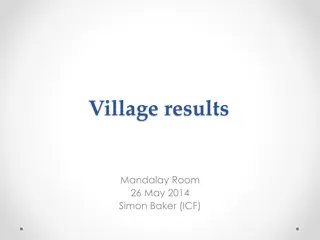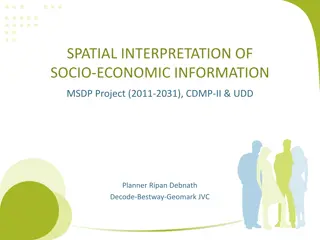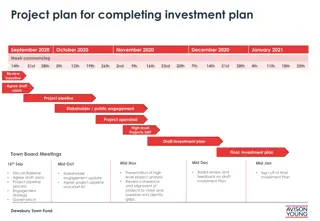European Semester 2024 Updates on Socio-Economic Context and Priority Areas
"The European Semester 2024 provides key employment and social developments in the EU focusing on priority areas like equal opportunities, fair working conditions, and social protection. Updates include monitoring of national targets and analysis based on the Social Scoreboard for policy action. Explore the latest data on EU labor market developments in 2023, highlighting trends in employment rate, unemployment, gender gaps, and youth NEET rates. Stay informed on the latest socio-economic trends to guide policy decisions."
Download Presentation

Please find below an Image/Link to download the presentation.
The content on the website is provided AS IS for your information and personal use only. It may not be sold, licensed, or shared on other websites without obtaining consent from the author.If you encounter any issues during the download, it is possible that the publisher has removed the file from their server.
You are allowed to download the files provided on this website for personal or commercial use, subject to the condition that they are used lawfully. All files are the property of their respective owners.
The content on the website is provided AS IS for your information and personal use only. It may not be sold, licensed, or shared on other websites without obtaining consent from the author.
E N D
Presentation Transcript
EUROPEAN SEMESTER 2024 JER 2024 and Spring Package 2024 EESC meeting, 25 June Katia Berti Head of Unit, European Semester, EMCO European Commission - DG EMPL
JER 2024 and JER 2024 and update on socio update on socio- -economic context economic context
JER 2024 Mandated by Art. 148 TFEU to monitor the implementation of the Employment Guidelines Key employment and social developments in the EU and the MSs; Priority areas for employment, skills and social policy action. Maintaining: Stronger focus on Pillar implementation, notably via Thematic Boxes on topical Pillar- related challenges Monitoring of 2030 EU targets on employment, skills and poverty reduction Novelties of the 2024 edition: Monitoring of 2030 national targets First-stage country analysis based on the Social Scoreboard in line with the principles of the Social Convergence Framework (SCF)
Priority areas from country analysis based on the Social Scoreboard EQUAL OPPPORTUNITIES Early leavers from education and training Share of individuals who have basic or above basic overall digital skills Youth NEET rate Gender employment gap Income quintile ratio (S80/S20) FAIR WORKING CONDITIONS Employment rate Unemployment rate Long-term unemployment rate GDHI per capita growth SOCIAL PROTECTION AND INCLUSION At risk of poverty or social exclusion rate At risk of poverty or social exclusion rate for children Impact of social transfers (other than pensions) on poverty reduction Disability employment gap Housing cost overburden Children aged less than 3 years in formal childcare Self-reported unmet need for medical care 0% 10% 20% 30% 40% 50% 60% 70% 80% 90% 100% Critical situations To watch Weak but improving On average Good but to monitor Better than average Best performers
EUROPEAN SEMESTER 2024 EU labour market developments in 2023 Robust labour market Employment rate at record high: 75.5% in Q4- 2023 o Gender employment gap, at 10.2 pps in 2023, remains large Unemployment rate remained low: 6.1% o but youth unemployment increased again to 14.9% (from 14.3%) o Young NEET rate still high, at 11.2% Real wage developments turned positive in the Q3-2023 o In 2023, nominal compensation per employee increased by 5.9%, still below inflation, leading to a 0.5% drop in real wages 25.0 76.0 75.0 20.0 74.0 73.0 15.0 72.0 10.0 71.0 70.0 5.0 69.0 0.0 68.0 2018Q1 2018Q2 2018Q3 2018Q4 2019Q1 2019Q2 2019Q3 2019Q4 2020Q1 2020Q2 2020Q3 2020Q4 2021Q1 2021Q2 2021Q3 2021Q4 2022Q1 2022Q2 2022Q3 2022Q4 2023Q1 2023Q2 2023Q3 2023Q4 Employment rate (20-64) (right axis) Unemployment rate (15-74) (left axis) Youth unemployment (15-24) (left axis) Source: Eurostat, LFS (seasonally adjusted data)
EUROPEAN SEMESTER 2024 Sizeable labour and skills shortages Vacancy rates in industry, construction and services decreased slightly in 2023 but remain at high level (2.6%) Job vacancy rates in the EU by economic activity (%, annual data) Industry, construction, services (B-S) Manufacturing (C) Construction (F) Trade, transport, HOCA (G-I) ITC (J) Professional, administrative services (M-N) 5 Priorities: Up- and re-skilling Effective ALMPs Other instruments to facilitate labour market integration (e.g. childcare) Improve working conditions Attracting talent from abroad 4 3 2 1 Action Plan on labour and skills shortages (March 2024) sets out key actions to be taken by COM, Member States and Social Partners 0 2016 2017 2018 2019 2020 2021 2022 2023 Source: Eurostat 2023
EUROPEAN SEMESTER 2024 Social outcomes relatively stable in 2023 despite inflationary pressures At risk of poverty or social exclusion rate The AROPE rate down to 21.4% in 2023 (from 21.7%) but remains higher for certain population groups o Severe material and social deprivation increased by 0.5 pps - more pronounced in the lowest income decile Energy poverty up by 1.3 pps reaching 10.6% in 2023; above 20% for some MSs (like ES, PT, BG). Source: Eurostat, EU SILC
Semester Spring Package 2023: Semester Spring Package 2023: labour market and social elements labour market and social elements
EUROPEAN SEMESTER 2024 The 2024 European Semester Spring Package Spring Package Chapeau Communication Outlines main economic and social policy priorities for next year Fiscal Policy Coordination Employment Policy Coordination Economic, Social and Employment Policy Coordination The Omnibus report (Art 126(3)) and fiscal statistical tables Proposal for a Council Decision on Guidelines for the Employment Policies of the Member States Country reports Prepared for 12 Member States that recorded a deficit above 3% in 2023 Take stock of the specific socio- economic challenges in every Member State Post-programme surveillance reports (ES, CY, IE, EL and PT) Guides national employment policies - to be drawn up every year (Art. 148 (2) TFEU) Commission proposals for country-specific recommendations Assesses the economic, fiscal and financial situation of Member States that have benefited from financial assistance programmes Address key challenges not or not sufficiently addressed by the RRPs
EUROPEAN SEMESTER 2024 European Semester: Chapeau Communication This year s cycle focuses on strengthening the EU s competitiveness, while preserving the European social model. The 2024 European Semester Spring package is (again) based on the four pillars of competitive sustainability: macroeconomic stability, productivity, environmental sustainability, and fairness. Highlights major common EU and country-specific challenges linked to competitiveness, including lowproductivity growth,weak investment dynamics and high labour and skills shortages. Describes the robust employment situation and analyses the social and regional disparities and challenges to upward social convergence in line with the Social Convergence Framework. Calls on Member States to address delays and structural challenges in the implementation of RRPs and cohesion policy programmes. Provides an overview of the revised EU economic governance framework.
EUROPEAN SEMESTER 2024 2024 Country Specific Recommendations Similar to last years, limited set of recommendations, taking into account measures covered in the RRPs and cohesion policy programmes: CSR 1: Rec on fiscal policy, incl. fiscal and fiscal-structural reforms, and occasionally also to address macro imbalances. CSR 1: Fiscal + fiscal- structural/MIP CSR2: Rec. to continue or accelerate implementation of the RRP depending on MS progress; swiftly implement the cohesion policy programmes, plus guidance on mid-term review; take advantage of opportunities provided by STEP. CSR 2: call to implement RRP/cohesion funds + guidance Cohesion MTR CSR3 + 4: where relevant. Recommendation(s) on key challenges beyond the RRPs to be addressed with a strong focus on competitiveness. CSR 3 + 4: Key further (competitiveness) challenges (optional)
EUROPEAN SEMESTER 2024 Employment, skills and social CSRs 2024 Education Skills, Vocational Education and Training & adult learning Labour and skills shortages/mismatches Non-discrimination and equal opportunities Poverty, social inclusion & social protection Healthcare Pension systems and active ageing Taxation policy Long-term care Active labour market policies, incentives to work & labour market participation New technologies, AI and algorithmic management Regional development & local public services Social dialogue Functioning of the labour market 0 2 4 6 8 10 12 14 16 18 20 SUST Total
Social Convergence Framework Social Convergence Framework
EUROPEAN SEMESTER 2024 Social Convergence Framework (SCF) Findings from the SCF assessing risks and challenges to upward social convergence in Member States, reflected in country reports and CSRs (without automaticity) The Second-stage analysis published by the Commission services in May 2024 analysed in more detail seven Member States (BG, EE, ES, IT, LT, HU, RO), and fed into the multilateral reviews in the EPSCO Committees These countries were selected based on the first-stage analysis, in the 2024 JER, which analysed labour market, skills and social policies for all 27 Member States in order to identify potential risks to upward social convergence based on the Social Scoreboard
EUROPEAN SEMESTER 2024 The SCF in the Spring Package For MSs of the second-stage analysis (BG, EE, ES, IT, LT, HU, RO): CSRs issued as relevant in line with the parsimonious approach Reference to the second-stage analysis with link in the recitals Clear references in the seven country reports: Upward social convergence challenges outlined in the economic and employment snapshot (section 1) and (more in detail) in annex 14 Conclusions from the second-stage analysis stated in the further priorities ahead (section 3), with link to the analysis itself Reference to upward social convergence in the key findings (section 4) Dedicated box explaining the SCF approach in the Chapeau Communication
Employment Guidelines Employment Guidelines
EUROPEAN SEMESTER 2024 Employment Guidelines 2024 The update provides guidance to Member States for their employment, skills and social policies. Novelties include calls to: Make progress on reaching their 2030 national targets on employment, skills and poverty reduction, next to EU level targets Put in place actions to tackle skills and labour shortages, including basic and digital skills, legal migration Next steps: Negotiations in EMCO, SPC, and SQWP Opinions from the European Parliament, EESC, Committee of the Regions Final Council adoption envisaged for November 2024 Support the uptake of new technologies, AI and algorithmic management Implement relevant policy initiatives, such as on platform work or affordable housing


